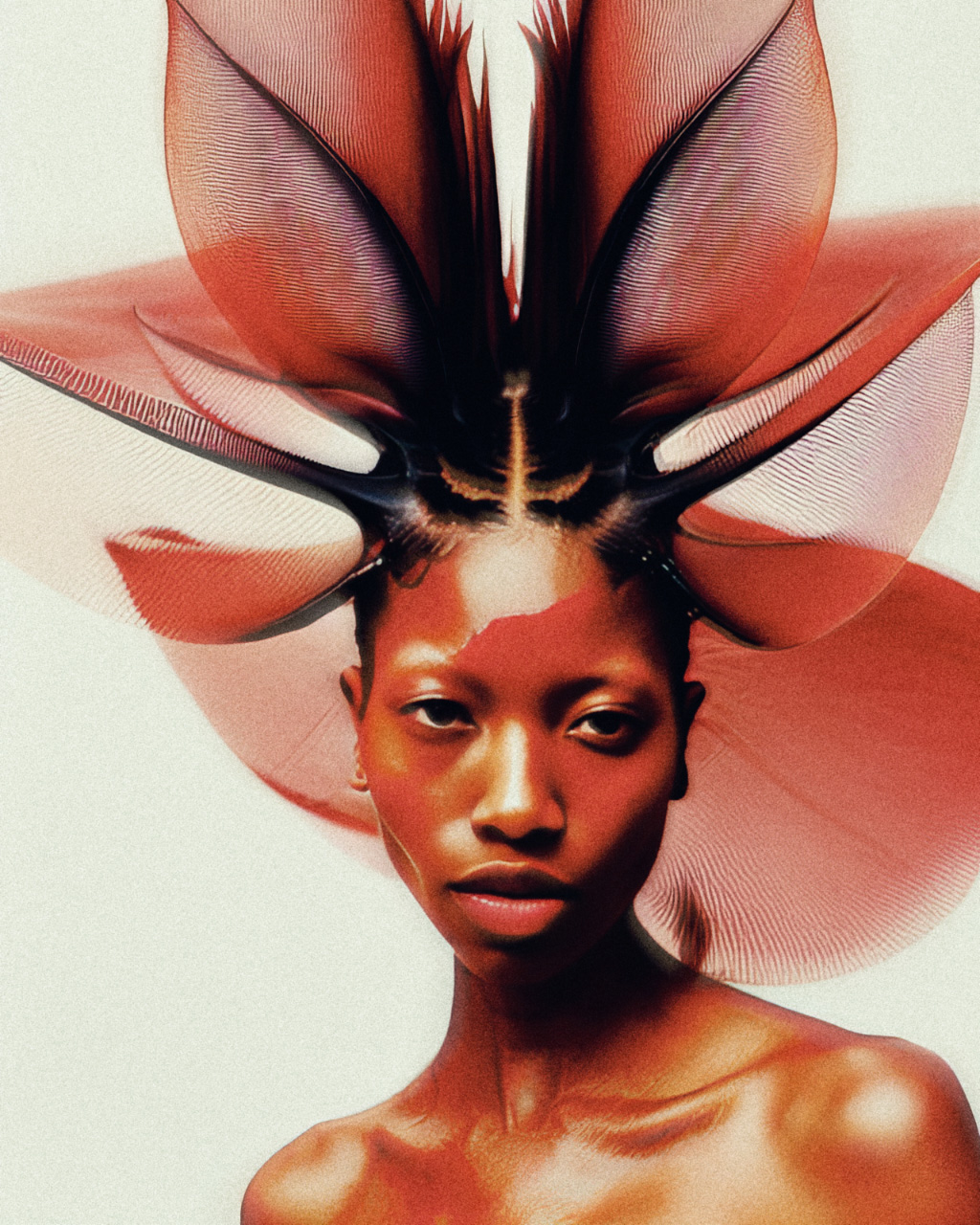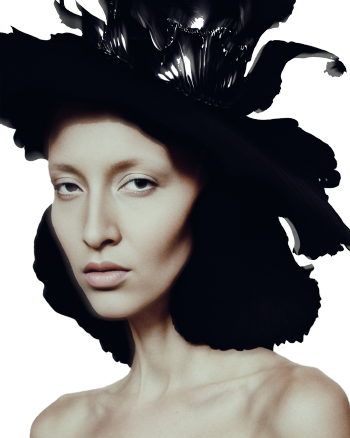
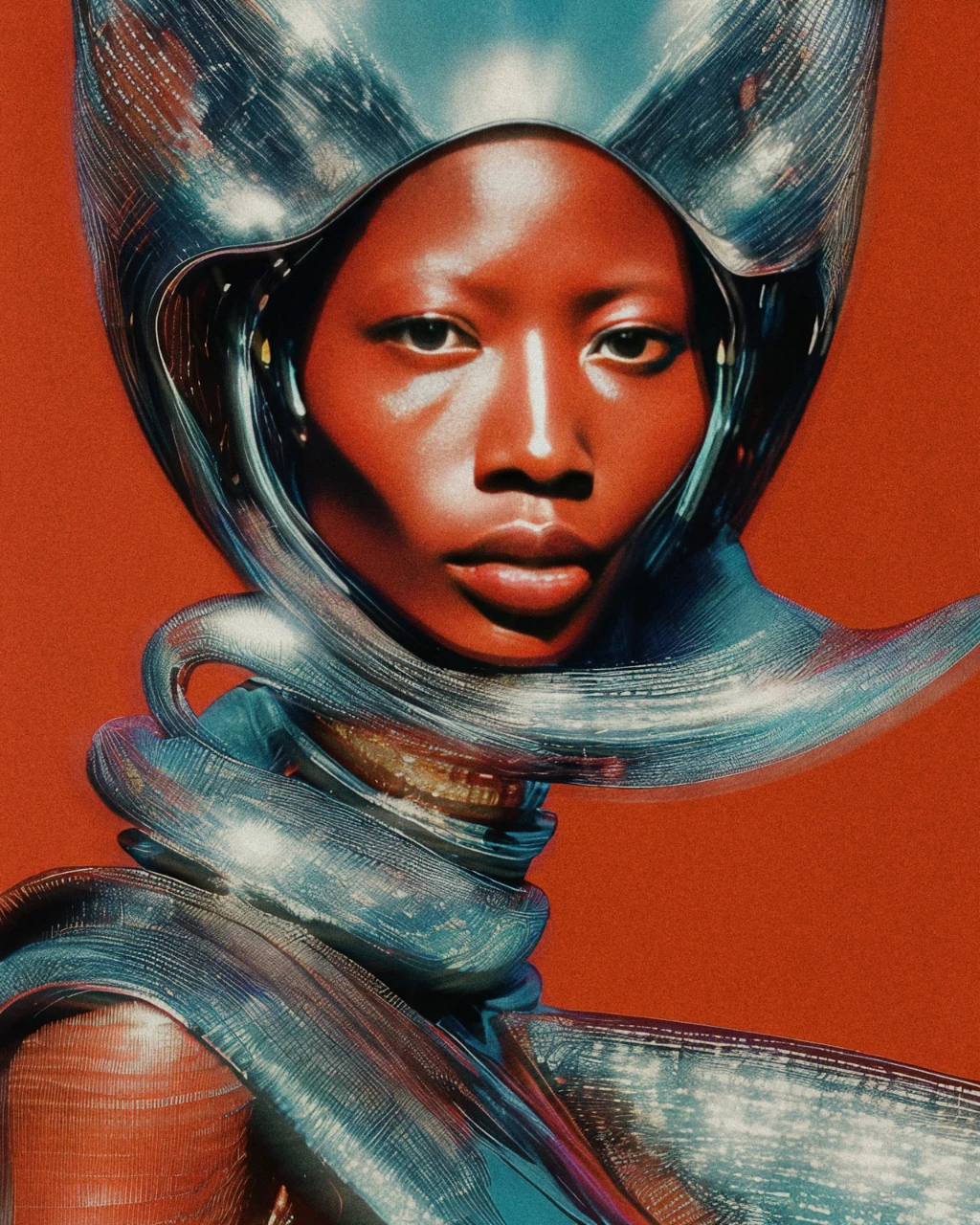
- Date
- 09 MAY 2023
- Author
- GLORIA MARIA CAPPELLETTI
- Image by
- @EDMAXIMUS
- Categories
- Aesthetics
Uniting Art and Engineering: A Journey into the Multidisciplinary World of Ed Maximus
Allow us to introduce Ed Maximus, a multidisciplinary artist who experiments with painting, sculpture, and even groundbreaking artificial intelligence. Although based in New York City, Ed is of Haitian descent and draws inspiration from his exceptional cultural heritage.
During our encounter with Ed Maximus, we were absolutely amazed by the stunning work that we saw. His artworks, with its power and striking imagery, is both sci-fi fantasy and infused with a touch of darkness that draws the viewer in.
What was even more remarkable was how Ed has been able to fully integrate every aspect of his identity - both as an engineer and an artist - into his creative practice. He has seamlessly united these two roles in his life, making them complementary rather than separate. This integration has allowed him to create a unique and distinctive body of work that is both technically proficient and deeply personal.
Join us as we dive into the mind of this talented artist and learn more about his journey to becoming a multidisciplinary artist, his creative process, and his unique approach to combining engineering and art.
Hi Ed, tell us a little bit about yourself: where did you grow up, what did you want to do?
I was born and raised in Haiti, where I developed a deep fascination for knowledge, art, and space exploration from a young age. My love for knowledge and art persisted throughout my life, while my dream of becoming a space explorer was crushed during my college years. My artistic journey began early, as I was part of a folkloric dance troupe between the ages of 4 and 6… In college, I chose to pursue a Mechanical Engineering degree after struggling with Astrophysics. After graduating with my bachelor’s degree, I taught myself programming, leading to an 11-year career as a Software Engineer… Throughout the years, I’ve explored various art forms, from ceramics, painting, and graphic design to photography and sculpting, eventually embracing a multidisciplinary approach to my art practice.
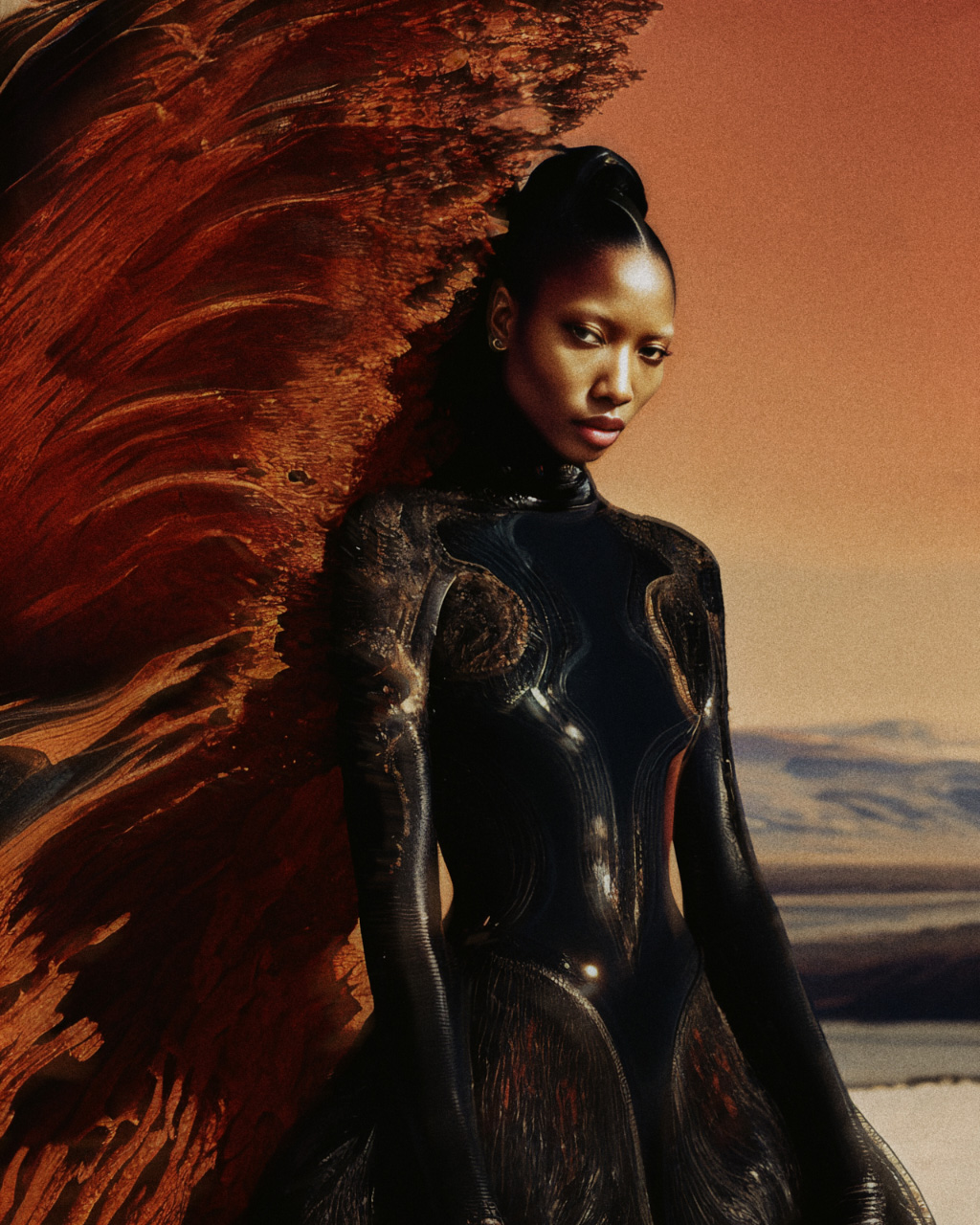
When you were a child, what did you do and where are you located now?
My childhood was fairly simple, filled school, learning, making friends, and spending summers in the countryside with my late maternal grandparents, where I enjoyed the simple pleasures of life, like sitting under a mango tree and savoring its fruits to my heart’s content. Sometimes I wish I could relive those moments as an adult… Currently, I live in Jersey City, a stone throws from NYC, where I continue to explore life’s many dimensions.
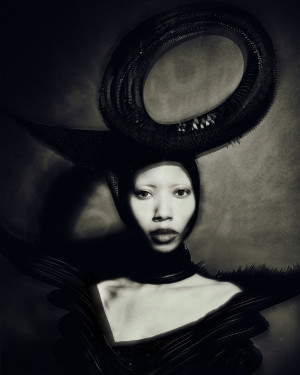
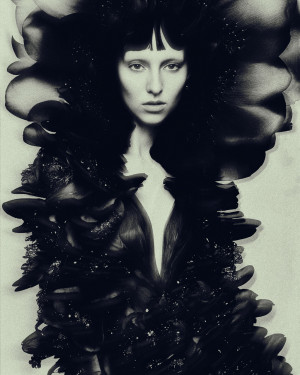
Do you recall when and how you first consciously encountered AI?
Certainly! My first conscious encounter with diffusion-based Artificial Intelligence occurred in June 2022 when I started using Disco Diffusion. At that time, I had just embarked on a mission to merge my artistic and engineering skills. I was also immersed in a 3D project using MagicaVoxel and Blender and had started exploring creative coding with P5.js. I was pretty much enthusiastic about experimenting with any innovative tools that could potentially enhance my creative process.
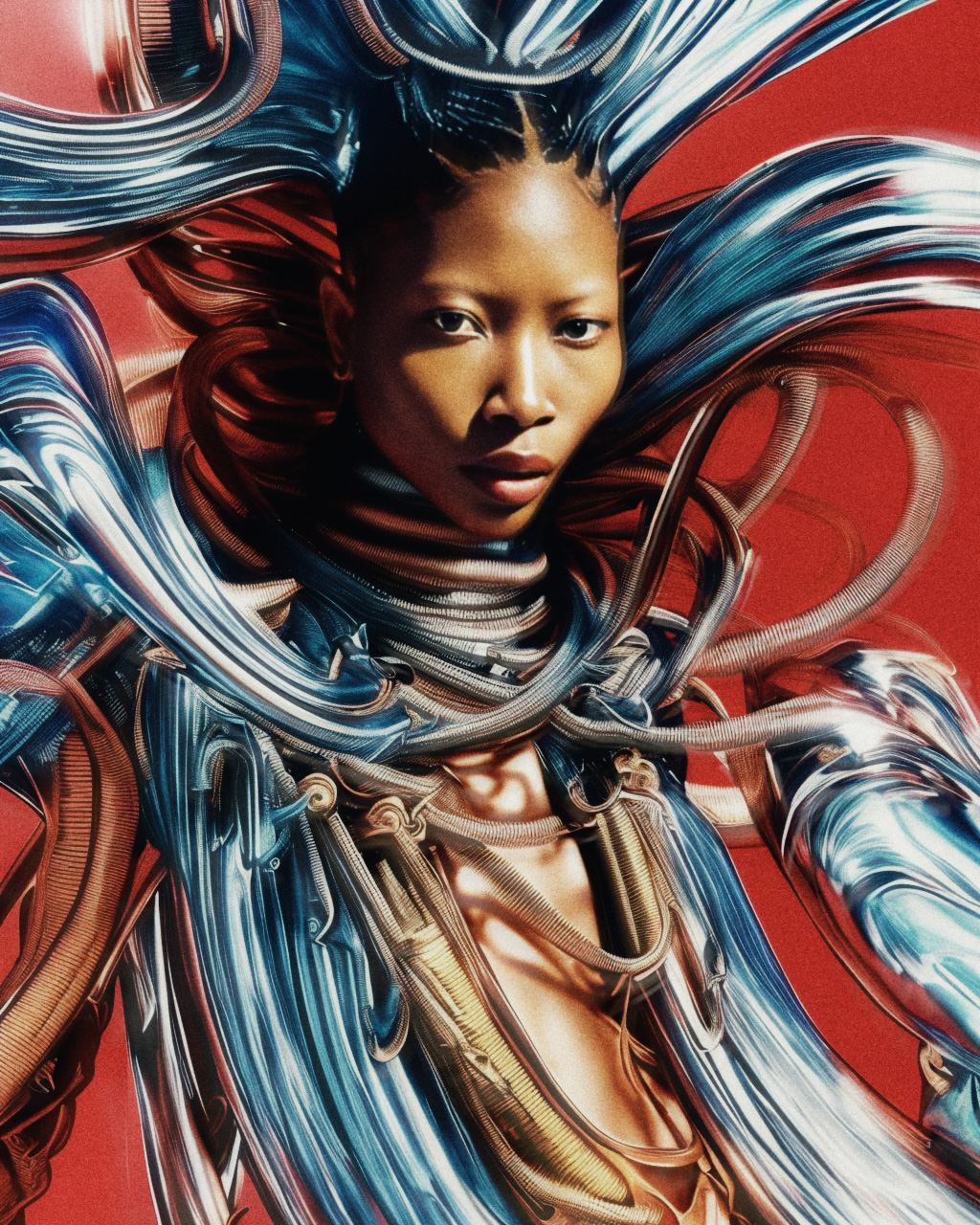
Can you briefly walk us through the development process step by step of your latest work? Where did the idea come from?
I'd like to discuss the process behind two of my recent series: Shapeshifters and Imaginarium. Both are crucial in understanding my approach to working with AI.
Shapeshifters originated from a conversation I had with my girlfriend about Iris van Herpen, one of our favorite designers. Although she consistently supports diversity in her runway shows, her designs tend to be showcased on white models when it comes to editorial features. Noticing that most otherworldly fantasy in fashion photography are often built around whiteness, I felt compelled to create something that counters this notion. So, I began creating images of Black models wearing clothing inspired by Iris’ designs, starting with using my girlfriend’s likeness. Eventually, this series evolves into exploring what we might wear in a distant future on a planet requiring adaptation for survival. An idea that was somewhat inspired by some of my recent favorite sci-fi TV shows (Raised by Wolves, Foundation, etc.). While the project has deviated from its initial Iris fantasy, it remains rooted in its core principle: increasing Black representation in realms where I believe they are often underrepresented.
In contrast, Imaginarium is primarily a photography series enhanced with AI. As a photographer (for over a decade), I fully understand the concerns regarding AI potentially replacing traditional photography or eliminating the need for stylists, makeup artists, and hair professionals in editorial productions. My goal with Imaginarium is to demonstrate that, regardless of AI advancements, human creativity will always remain essential in the artistic process. And it can coexist harmoniously with AI. My talented stylist friend, Ayumi, serves as the project's cornerstone, participating in each shoot alongside hair stylists and makeup artists as needed.
For both series, my process entails photographing the models, as in any conventional photography production. I then go through the images to select those that accurately capture the subject's essence and retouch the chosen ones to remove blemishes or other imperfections. Finally, I use the retouched images to fine-tune multiple AI models based on the subject's likeness, ultimately creating the final images using AI and photoshop.
For Imaginarium in particular, I had to first brainstorm the concept behind each photoshoot then consult with Ayumi to determine their feasibility and envision the wardrobe styling. After that, I would create a mood board, seek hair stylist and makeup artist to collaborate with, and cast the model(s). On the day of the shoot, I focused on capturing both editorial images for the series and images required to fine-tune AI checkpoints for both the model’s likeness and the style, reflecting Ayumi’s styling aesthetics.
During post-production, I used these checkpoints along with the IMG2IMG and inpainting features to generate images that I will use to alter specific aspects from some of the editorial photos. For example, If I needed to transform a garment into something more fantastical, I generated several variations of the original image with the model wearing the garment and extracted elements from it to bash on top of the original using photoshop. This iterative process often consumes a considerable amount of time, but the result is worth it.
A small number of images from this series were generated using the fine-tuned checkpoints along with a base image from the shoot. I wanted to push the boundary to see if I could produce something from the latent space that people couldn’t discern from real photos. I even conducted a few polls on Instagram to test this, and surprisingly, even those involved with the project struggled to identify which images were AI-generated, enhanced, or straight from the camera.
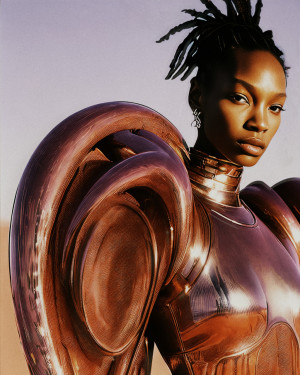
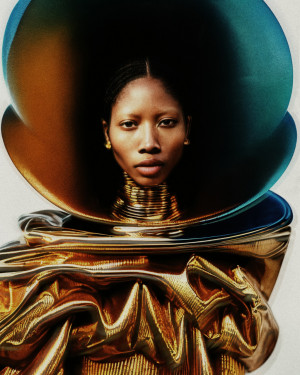
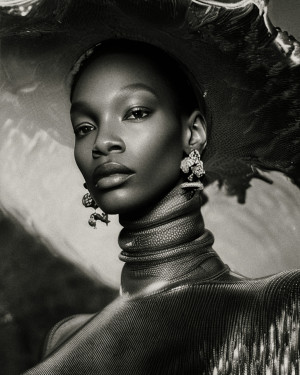
What software did you use to create this project?
For the AI components of both projects, I used Stable Diffusion. Being an open-source platform, it gives me the flexibility needed to retain control over my creative process. Furthermore, the ability to fine-tune checkpoints using Dreambooth and use them with Stable Diffusion is vital to my process. One of my objectives is to base what I create with AI assistance on either my existing archive of work or on real people with whom I have formed a connection. While this may not always be achievable, I think it’s a goal worth striving for.
For editing and retouching, I rely on CaptureOne and Photoshop. Photoshop also plays a critical role in the final stages of my workflow, as it enables me to combine AI-generated elements with my photography, finalize the composition, and do color grading.
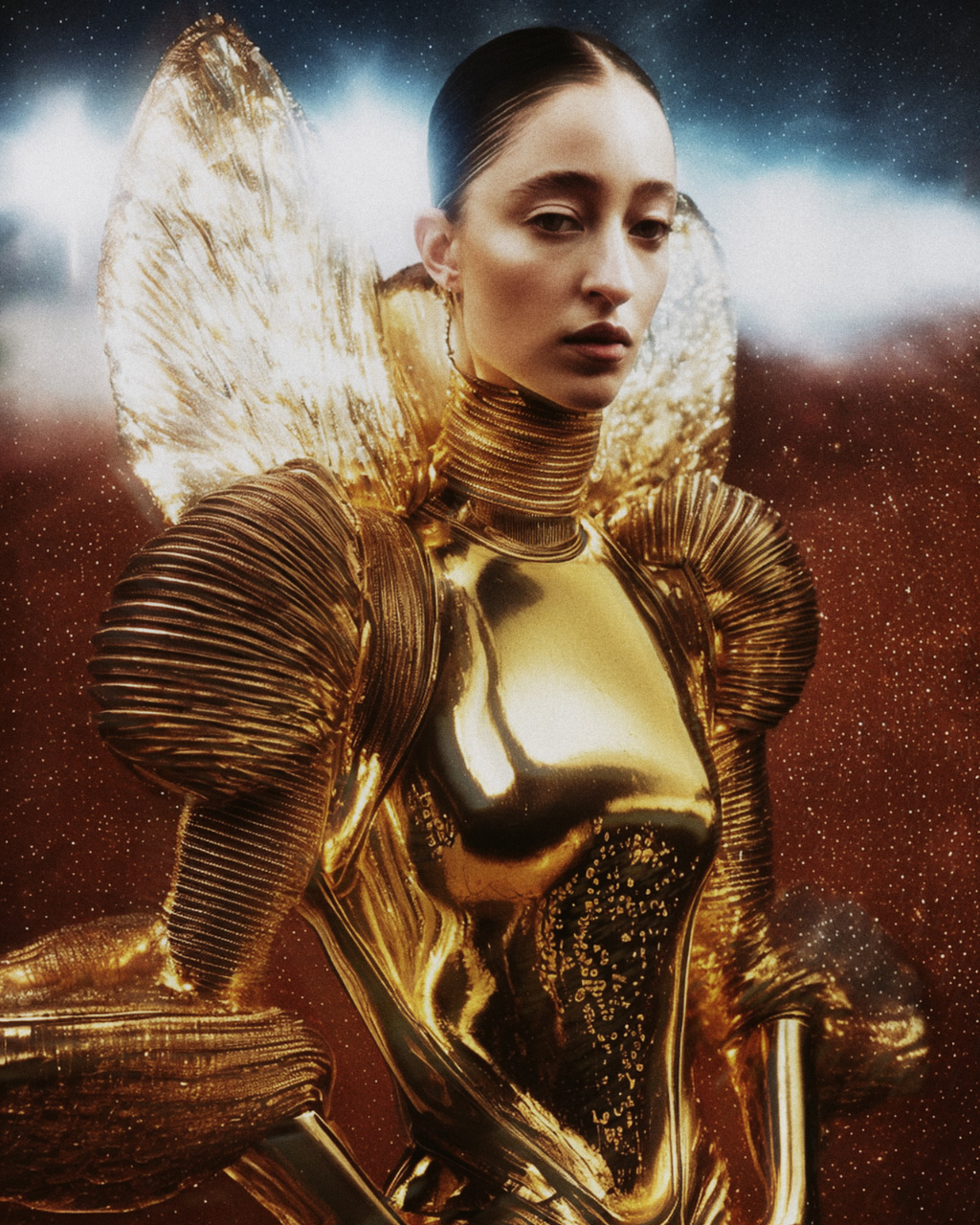
What challenges did the images present?
Creating AI-assisted work based on real-life individuals can be quite of a challenge. As a detail-oriented artist with a photography pedigree, this difficulty increases exponentially. At times, I would exhaustively try to perfect the accuracy of a person’s features instead of accepting that AI currently cannot replicate someone with complete fidelity. I even struggled to accept the inconsistencies arising from creating multiple images of the same individual. To overcome this, I incorporated this discrepancy into the narrative of the series Shapeshifter, thus the name. Oftentimes, I wish I could produce the final image with my camera the traditional way, as it would require less effort. But sadly, traveling to Mars with a team of creatives or pulling the unique outfits that I can generate from the latent space is simply not feasible.
What inspires you as an AI artist?
I wouldn’t really label myself as an AI artist, as that would overshadow my extensive background as a multidisciplinary artist. This isn’t meant to undermine the AI artist community in any way. Even calling myself a photographer feels limiting, despite having used photography as my primary form of expression for over a decade. To me, AI is a versatile tool that I have managed to incorporate into my creative process, and the endless possibilities it offers for creative expression truly inspire me.
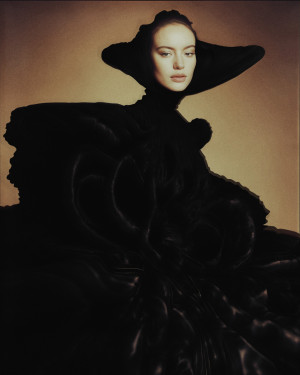
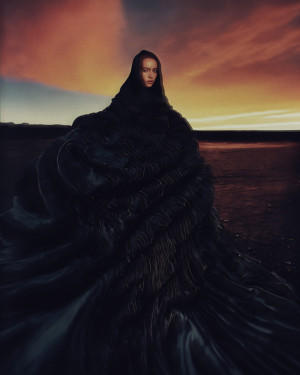
What is your favorite subject in AI? For what reasons?
If by "favorite subject" you mean in terms of art, I'm not sure I can pinpoint one specific preference. I consider myself an explorer, and I try not to confine myself to particular subjects. However, based on my current work, one might conclude that I have a penchant for sci-fi fantasy with a touch of darkness. If the question refers to AI in general, what captivates me the most is the astonishing pace at which the field and its underlying technology are evolving. It's astonishing to see the progress made in just a year's time. I remember when I first generated images using Midjourney last year; while they weren't extraordinary, the ability to create an image with just a few words was still impressive. Now, with the release of Midjourney v5, we have a tool that can generate stunning images that can captivate and amaze any viewer. The AI field continues to make groundbreaking advancements at a rapid pace, far surpassing the speed of progress in other disciplines.
What are you looking for when generating?
When working on specific projects such as Shapeshifter and Imaginarium, I always have a particular objective in mind, ensuring that the generated images align with the project’s vision. Initially, I would test the capabilities of all the fine-tuned checkpoints by generating several images on an XYZ plot using a specific prompt and settings. Next, I use my photos through the IMG2IMG feature and/or ControlNet to control the model’s posing. For the remaining elements – environment, mood, and outfit – I rely on my prompts to help me find the most amazing ingredients through the latent space. My objective is to create images that enthrall viewers, regardless of their interest in AI.
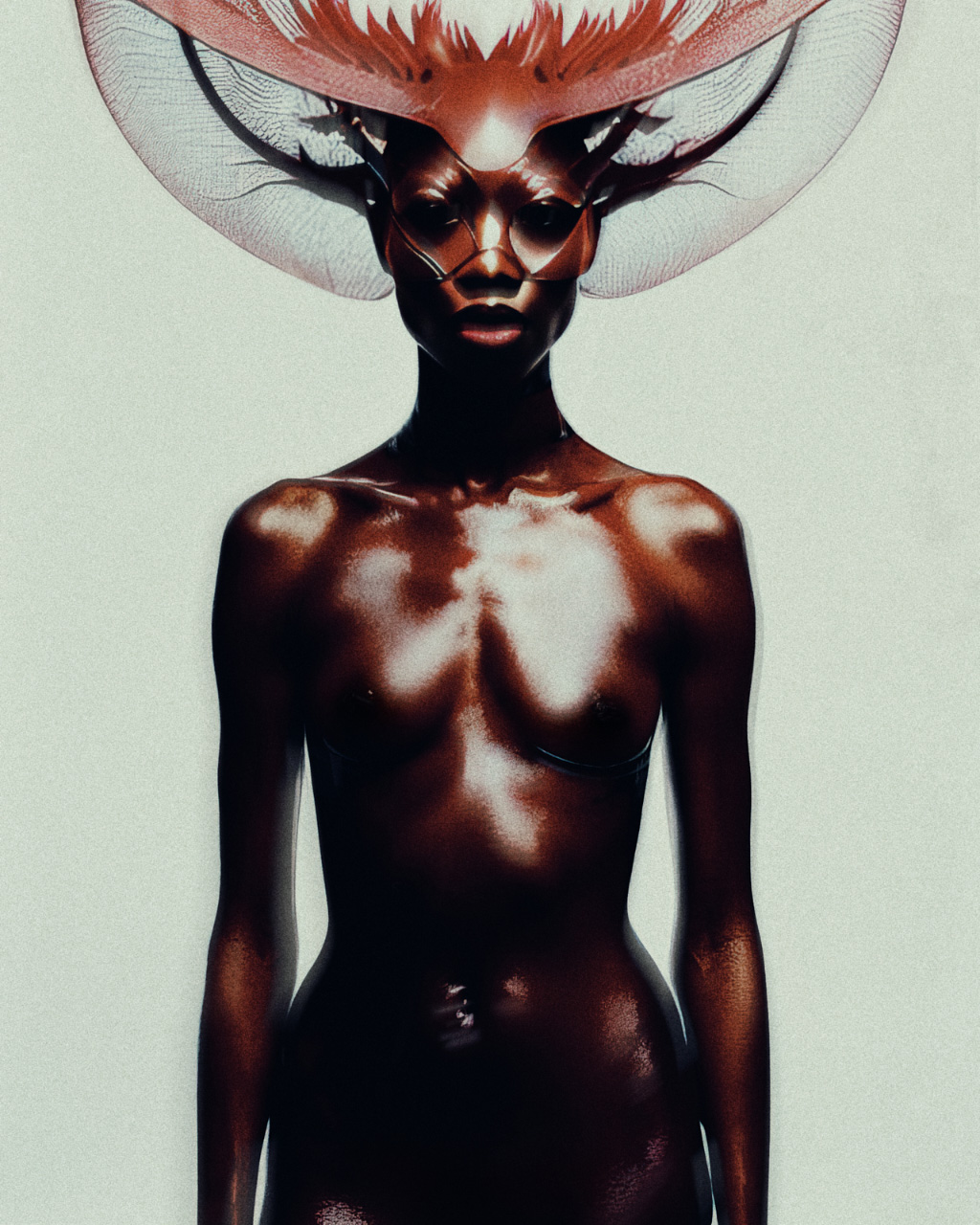
What are your artistic ambitions?
Listing all my artistic ambitions would take quite some time. I have been focusing on two major ones lately. The first is to fully integrate every aspect of my identity – as both an engineer and an artist – into my creative practice, thus unifying these two roles in my life. The second goal is to build a self-sustaining ecosystem within my art. With each passing day, I get closer to realizing these ambitions. My recent project, Visual Abstraction, demonstrates my progress in both areas. Leveraging my software engineering skills, I created a generative algorithm that produces art pieces, which in turn inspires more AI-based artworks. The models I used to generate the AI pieces were fine-tuned with works from my entire artistic journey. Additionally, several of these pieces will form the foundation for traditional artwork I'll create in the near future. This entire process resembles a continuous ecosystem that can both creates new possibilities and sustains itself.
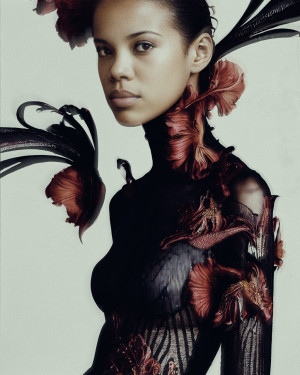
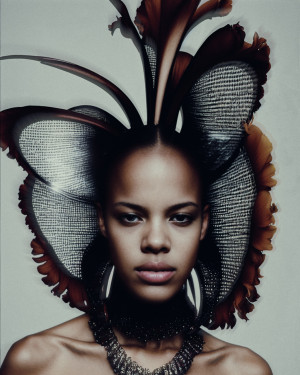
Who are your favorite artists, traditional or digital, and can you explain why?
That's actually a difficult question to answer, as my list of favorite artists frequently changes. Moreover, I tend to be a bigger fan of the art itself rather than the artists, especially when it comes to those who are no longer with us. Nevertheless, here are a few living artists who are currently inspiring me through their work or personal journeys:
· Titus Kaphar: A contemporary painter who challenges traditional historical narratives by reinterpreting and recontextualizing iconic Western art. I vividly remember the impact his work had on me when I first discovered it.
· Sam Spratt: A digital artist who skillfully blends classical painting techniques with modern digital media. I've followed his journey since his early days on Tumblr and even have a portrait of me painted by him. He has become a prominent figure in the NFT space, and I greatly admire his artistic vision.
· Txema Yeste: An exceptional fashion photographer known for his striking compositions and bold use of color. I particularly appreciate his portrayal of Black models in his work.
· Wolve Von Lenkiewicz (Von Wolfe): A brilliant painter with an Old Master pedigree. His paintings are consistently captivating, and I especially admire his willingness to incorporate new technologies into his practice, such as using AI-generated work based on his archive as a painter.
· Markos Kay: I'm amazed by the artistic possibilities he has explored using AI. His work serves as a testament to the limitless potential this tool offers artists. I believe you've interviewed him already.
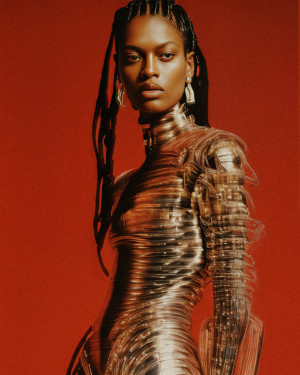
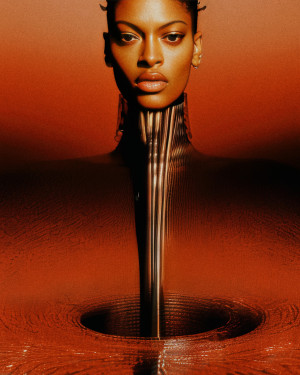
From your personal experience, what is some advice you could share with aspiring AI artists?
Based on my personal experience, I would advise aspiring AI artists, or anyone interested in pursuing being an artist in general, not to restrict their creativity to a single avenue. Too often, people follow the latest trend and make it their entire identity. A few years back, it was NFTs, and now it's AI. If art is truly your passion and AI is your starting point, approach it as a journey. AI might become the most potent creative tool humanity has ever created but it will never surpass the value of a curious mind and a rich imagination. Channel your newfound enthusiasm to explore beyond the confines of the machine and find ways to set yourself apart from the sea of AI artists.
What do you think about NFTs?
Surprisingly, I am not involved at all in the NFTs’ space. I tried once to venture into that realm with one of my projects, but I quickly decided against it. I recognize and appreciate the positive impact NFTs have had on empowering artists who might not have received attention from the conventional art world, offering them opportunities to make a living from their work. However, as an outsider, it appears that being successful in that space requires a significant amount of effort and social clout beyond just simply producing great art.
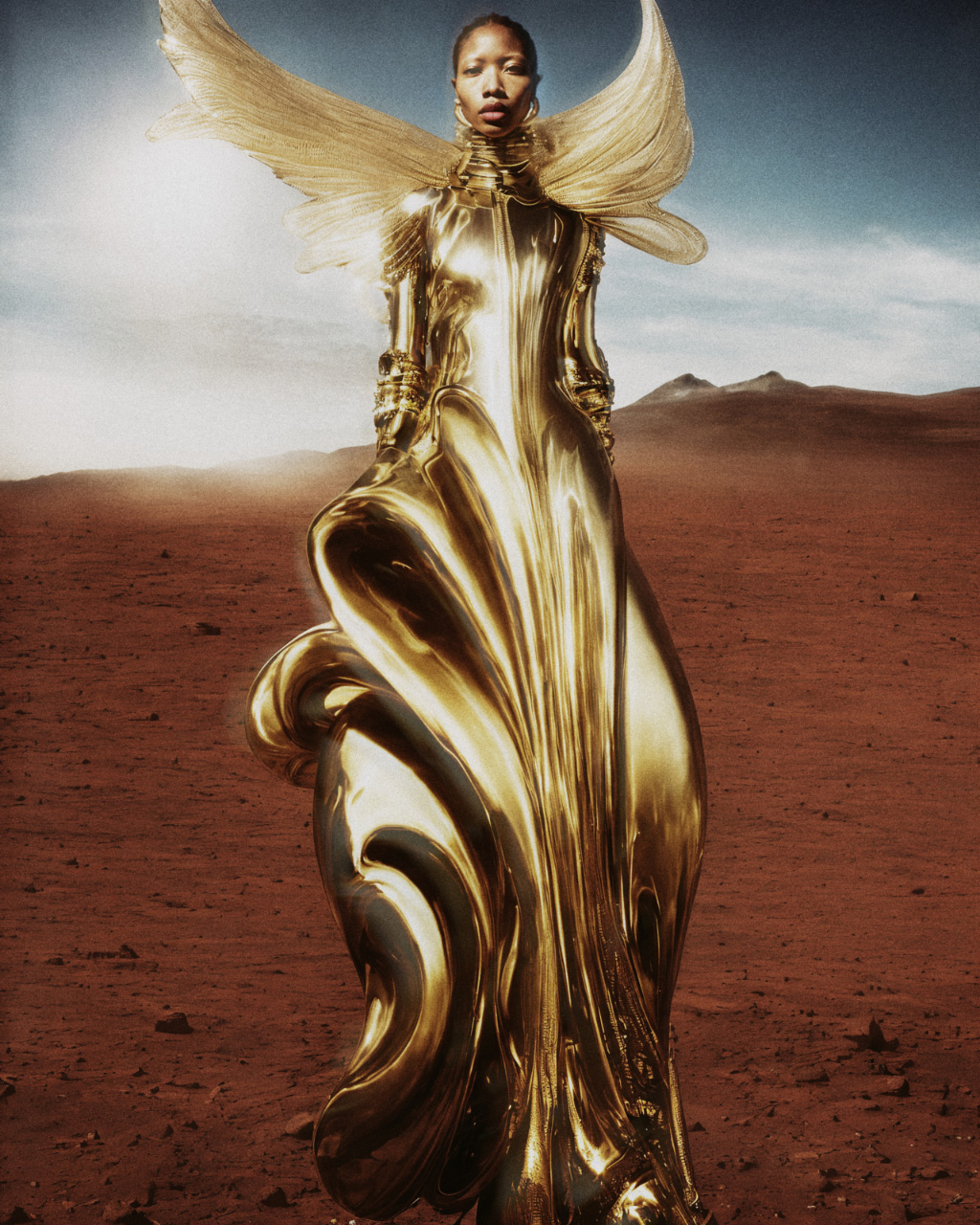
What can we expect to see from you next?
I have a few exciting projects lined up that I can’t talk about yet. I also have older projects that I have completed but haven’t released publicly, and I need to concentrate on sharing those first. Visual Abstraction, which I mentioned earlier, is one such project I have been working on for a year. I published a version of it on my studio’s website a few months ago, but I wasn’t entirely satisfied with it, so I didn’t promote it. Now that it has reached a stage, I’m proud of, I want to put in the effort to share it with the world. Additionally, I’ve been working on a series of oil paintings on canvas, which I have a grand plan for in the near future. Keep an eye out for those things and more.
